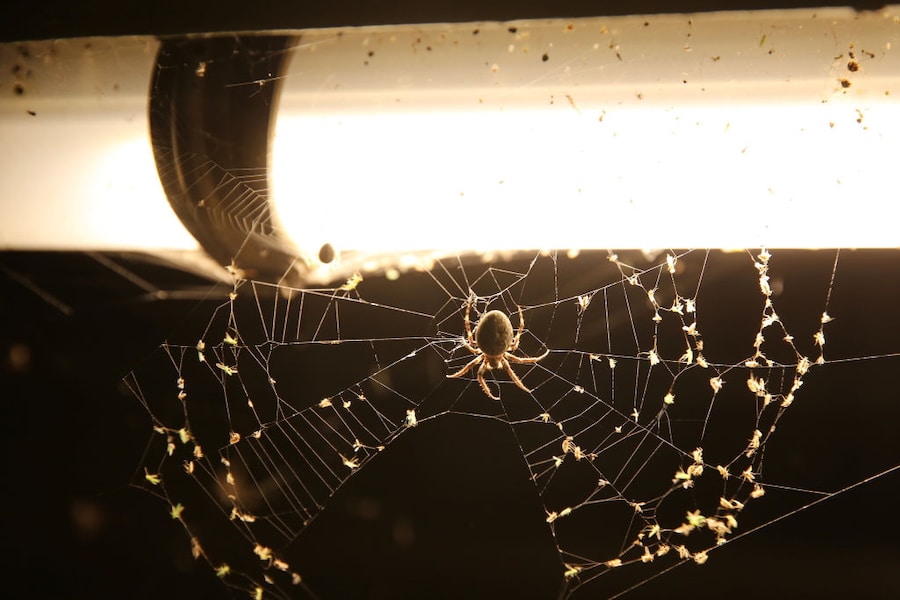This post was originally published on Eco Watch
Insect numbers are plummeting, with the recent The Bugs Matter Citizen Science Survey finding that bug splatters in the United Kingdom have fallen 63 percent since 2021.
There are things you can do to help with the bug crisis, and when you support insects they will help your garden thrive by pollinating your plants and flowers, devouring pests, improving soil health and attracting songbirds.
Here are some easy ways you can help protect beneficial insects around your home and garden.
Turn Off Unnecessary Lights at Night
Artificial light is detrimental to insects, interfering with their navigation, reproduction and feeding. If you’ve ever watched a moth flying around your porch light or lamp in the window, you have witnessed their disorientation while trying to navigate using the moon and stars. Researchers have estimated that a third of insects trapped orbiting artificial light sources will perish, reported The Guardian. Consider what lights you’re using and if they’re really necessary. Turning them off, putting them on a timer or shading windows are options to reduce your share of light pollution.
Let the Leaves Lie and the Grass Grow
Decomposing leaves make perfect habitat for beetles, spiders, bees, moths, butterflies and many other insects, so leaving them undisturbed is a great way to help out the beneficial bugs in your garden. On the other hand, raking leaves can reduce spider numbers by as much as 67 percent, butterflies by 45 percent and beetles by 24 percent, according to research.
Allowing fallen branches, logs and dead trees to rot and fungi and microorganisms to move in also provides food and shelter for insects. Likewise, having a shagging lawn of uninterrupted grass, especially one peppered with wildflowers, can boost insect populations with little to no effort.
Plant Pollinator Flowers Using the ‘3 x 3 x 3’ Method
Planting for pollinators can be as easy as one-two-three! Choose three native flowering plant species for each of the three — spring, summer and fall — growing seasons. Then plant three of each in their own area of the garden. They will give pollinating insects the food and habitat they need all year round. Adding some rocks to your garden also makes great habitat for bees.
When choosing which plants to add to your garden, keep in mind that certain plants are keystone species that many pollinators need to survive, particularly when they are in the caterpillar stage. In fact, 90 percent of North American caterpillar species depend upon just 14 percent of native plants. The National Wildlife Federation provides a regional list of keystone plants on its website.
Water Is Life
Soaring global temperatures and drought conditions are tough on insects. Providing water sources — whether it’s a basin, bowl or pond — can help, but be mindful of bees’ inability to swim and make sure they have a rim or an island they can drink from. The water doesn’t have to be absolutely clean, however, as research has shown that “dirty” water containing algae or leaves can provide bees with important nutrients.
Start a Compost Habitat
Creating a compost pile is a great way to help insects while improving soil health. Composting provides food and a safe habitat for garden insects that can help get them through tough times like drought and cold winters by providing moisture and shelter.

Support Organic Regenerative Farming Practices
The collapse of insect populations across the globe has been linked to the use of toxic pesticides and intensive agricultural practices. Buying organic foods supports farmers who are growing fruits and vegetables without synthetic pesticides, giving insects the healthy habitats they need to recover and thrive.
Use Less Plastic
According to a recent report, microplastics are the second biggest emerging threat to insects, reducing their health and lifespan. Synthetic fabrics like nylon, spandex, polyester and acrylic are made of plastics and shed millions of tiny particles as they are worn and washed, contributing to microplastic pollution. On the other hand, natural fibers like wool, linen and organic cotton do not shed these insidious plastics or pesticide and insecticide residue. Reducing the use of plastic bags, bottles and packaging also helps contribute to a plastic free world, protecting insects and other animals, including humans.
Pull Weeds by Hand Instead of Relying on Herbicides
One of the most beneficial things you can do for your health is to get out into nature, even if it’s just working in your own garden. Chemicals like glyphosate — one of the most common herbicides in the world — have been proven to damage the immune systems of insects. Gardening and weeding by hand not only avoids the use of these deadly toxins, but has been shown to lower anxiety and depression while increasing physical health.
Taking a moment to step outside, survey your home and garden and make small changes can have a big impact on the insects who make up the foundation of our ecosystems.
The post Insect Numbers Are Plummeting: Here Are Eight Easy Ways to Help appeared first on EcoWatch.





0 Comments